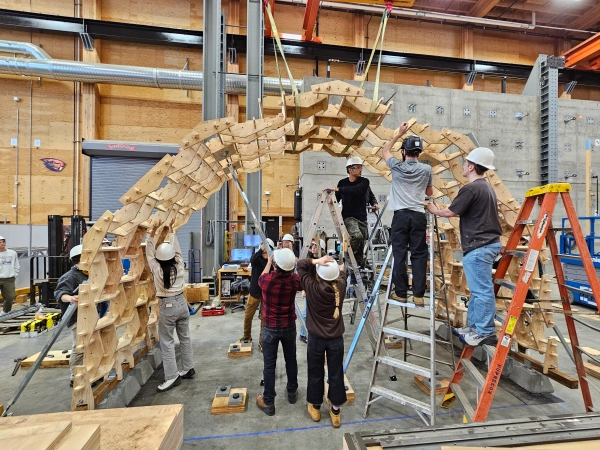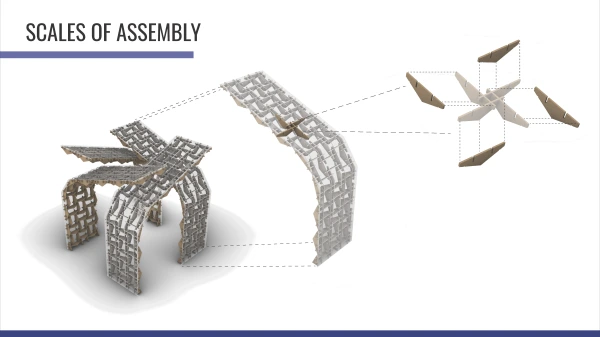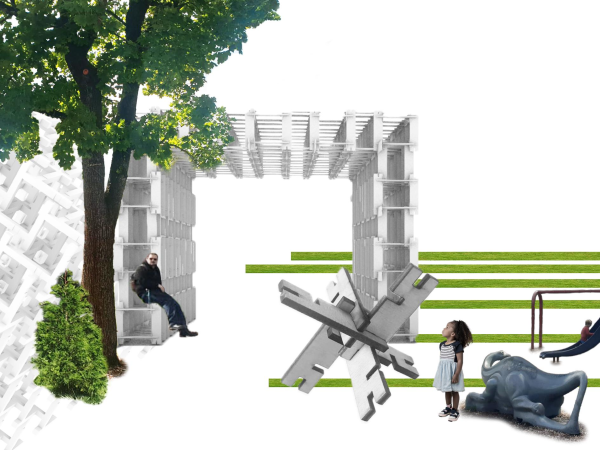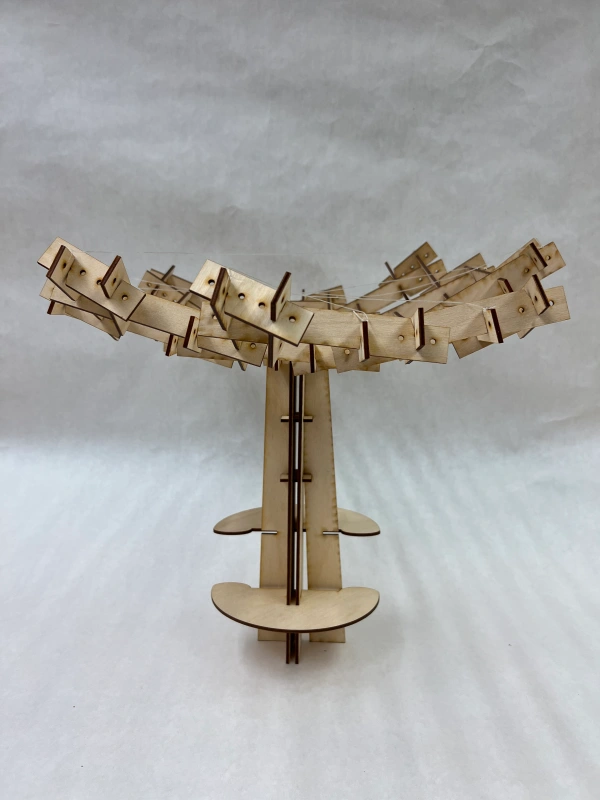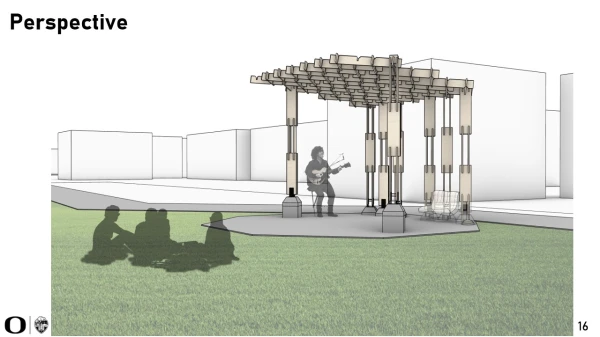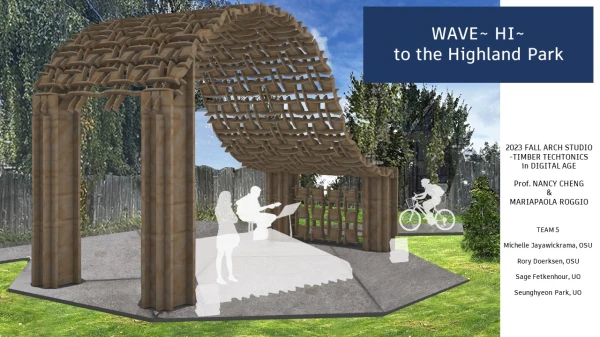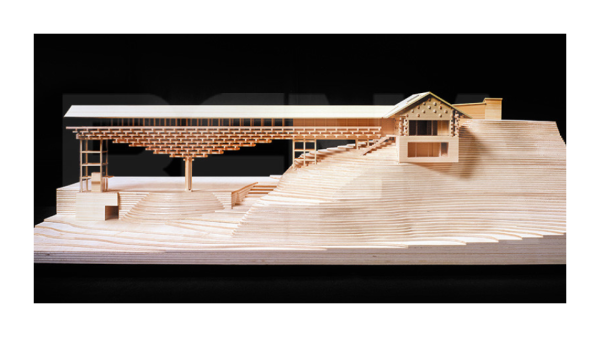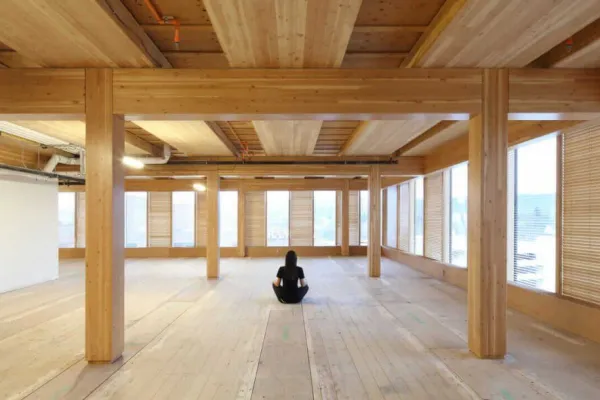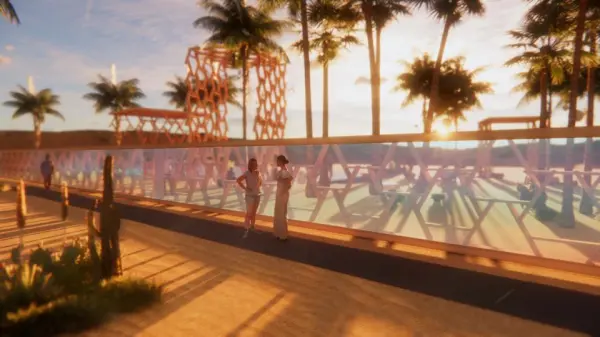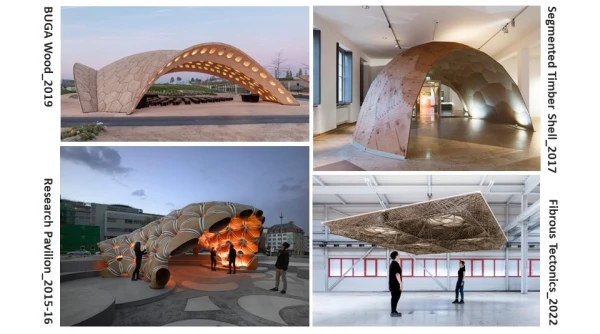Want to build with us? See Circular Design/Build to participate March to April 2024 OVERVIEW: Exploring Design for Deconstruction and Reuse of panel materials, the Fall 2023 Timber Tectonics project centers on the adaptable nature of reciprocal frame construction, in which mutually supporting small members join to create a larger span than the length of... Continue Reading →
Team 1 Reciprocal Frame Pavillion
Volumetric Reciprocal Frames Nic Ernst Harvey Smith Marie Lee Lara Diehm Early designs show clearly how dense the structure becomes when using this 3D system. In order to lighten up some of the structure, pieces were elongated to allow views in and out, however there was a major concern of buckling on the elongated pieces,... Continue Reading →
Team 2 Highland Park Tree Pavilion
Case Study: RAW:almond Our design took a lot of inspiration from RAW:almond temporary restaurant pavilion in Canada. We reverse engineered to find the form of the single reciprocal frame element and study how the project was constructed. It help us in developing our frame research at a smaller scale. Design Process: Our approach to figuring... Continue Reading →
Team 3 Reciprocal Frame
We experimented here with variations in notches to create easier assembly. We also started looking at developing our vertical supports that reflect the same module pattern as the reciprocal frame. We adjusted the square footage to fit the 120 SF footprint and cut the members that were not supported enough on the edges. We will... Continue Reading →
Wave Hi to the Highland Park
Case Study From Reinforced Concrete to Plywood The case study that our assembly was based on was designed as a reinforced concrete structure. The beams were wider, rougher, and heavier than their wooden counterparts, which allowed them to rest effectively on top of each other. The wooden members did not behave this way. Their slender... Continue Reading →
Better Timber Sourcing
The construction industry produces about 40% of the world's atmospheric carbon, as a consequence of the high heats needed to manufacture concrete and steel. Mass timber is seen as a sustainable solution to reducing the carbon footprint associated with building construction. Timber logging, however, has its own negative impacts on the environment. Trees sequester atmospheric... Continue Reading →
The Architecture of Burning Man
A nomadic system for continuous use and disassembly This design team successfully created a catalog of structures based on the same modular, reciprocal framing system. In the application of music festivals, the team designed a barrier, footbridge, small canopy and stage shell. Each of these installations have components that are adjustable, such as the cladding... Continue Reading →
HygroShape: Self-Shaping Structures from ICD/ITKE
The projects introduced in this post are from ICD and ITKE, Both institutes are in the university of Stuttgart in Germany. ICD’s Research and teaching are in the field of computational design and computer-aided manufacturing in architecture. Research and teaching at the ITKE focus on the integration of structural design and architecture. [Some of the... Continue Reading →
